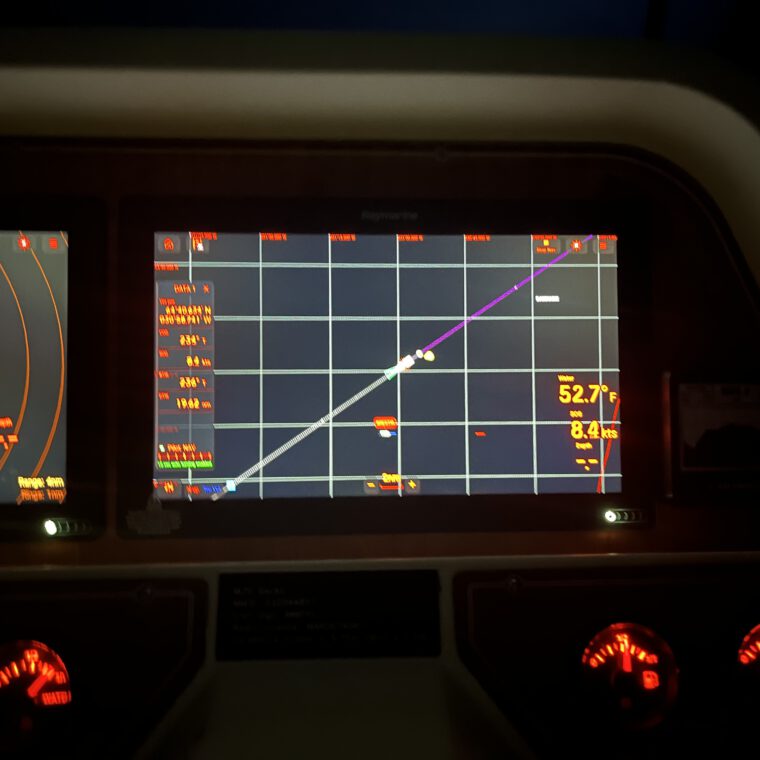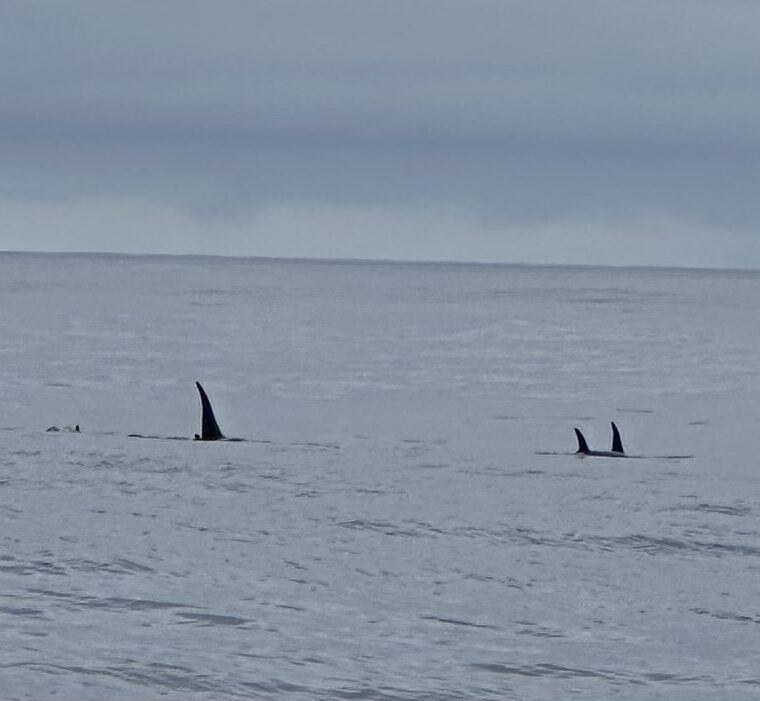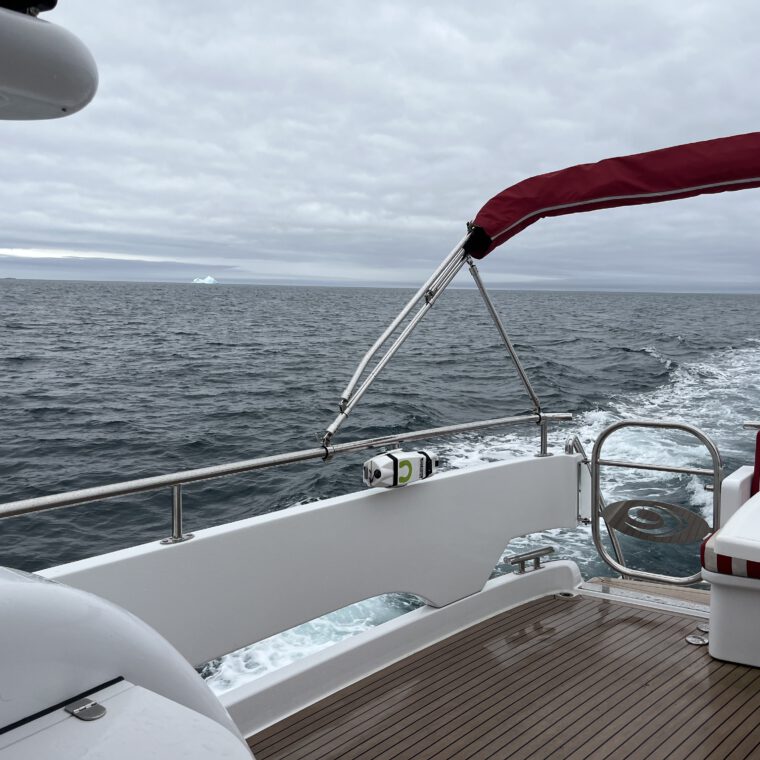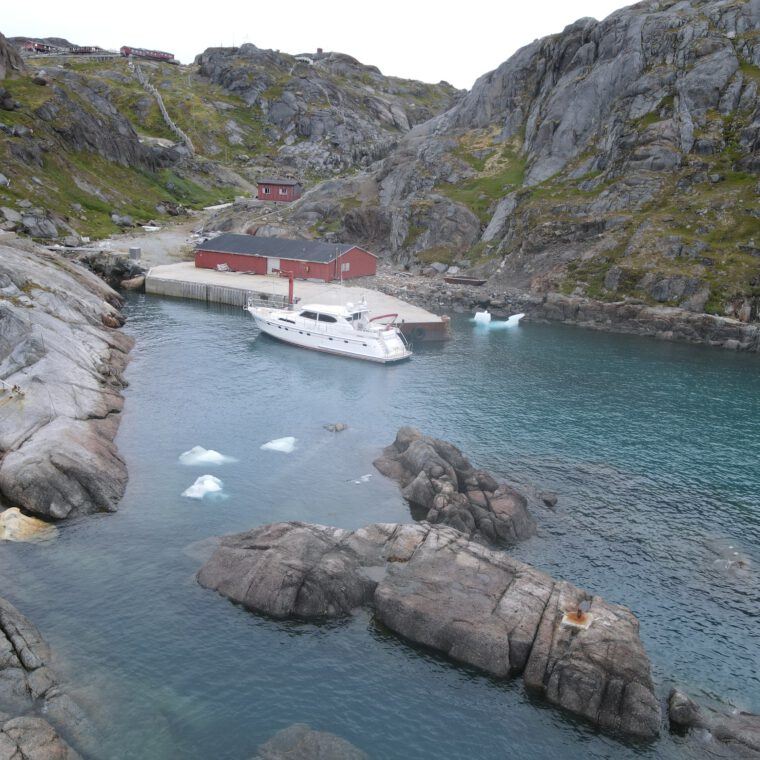From Húsavík to Prins Christianssund
Day Before Departure from Húsavík (August 6, 2024)
The day before our departure, we planned to refuel. Unfortunately, when we tried to start the engine, it wouldn’t start due to an issue with the starter batteries they had drained during our stay in Húsavík. The charger wasn’t sufficient to keep them charged because of the age of the batteries. Thanks to the excellent support from the Elling yard and a local whale watching company, Gentle Giants, the problem was quickly resolved. Gentle Gaints arranged two new batteries, allowing us to keep our departure schedule intact.
Departure from Húsavík (August 7, 2024)
On the morning of our departure, we had to refuel, as the previous evening’s issues had delayed our plans. After refueling, we left the harbor of Húsavík at 9:30 AM. We had a great stay in Húsavík, where we explored the Diamond Circle a scenic route in northern Iceland, showcasing volcanoes, waterfalls, geysers, and more. Húsavík is famous for whale watching, and whales can often be spotted just a few miles from the harbor. Despite our search, we weren’t able to spot any whales.
First Afternoon at Sea off the Icelandic Coast
We set a course westward, cruising along the Icelandic coast. The view of Iceland from the sea was breathtaking. We occasionally saw dolphins, and at one point, they swam right up to the boat, seemingly curious about what we were doing.
Night of August 7 to 8
Our first night at sea was calm. We passed close by the Scenic Eclipse, a 6-star ocean cruise ship capable of navigating the Arctic with ease. This luxurious vessel boasts amenities like helicopters and a submarine. By the end of the night, we altered our course to head southwest towards Greenland.
Wind at Our Backs (August 8, 2024)
With a northwesterly wind at our backs, we cruised comfortably at 9 knots. At this speed, the Gecko was fuel-efficient and remarkably quiet a very comfortable. During our time at sea, we saw many beautiful sights. A Northern Fulmar, which looks like a gull but has stiff wings and a unique gliding flight, frequently visited us. These birds, related to petrels and albatrosses, spend most of their lives at sea and can live up to 40 years.
Night of August 8 to 9
We didn’t see any spectacular sunsets on this trip. It was a quiet night until we noticed a distant light. The AIS didn’t pick it up initially, but shortly after, a fishing boat appeared on the screen, moving at around 8 knots with an easterly course. We passed each other at a distance of 5 nautical miles.
Orcas Again (August 9, 2024)
Ahead of schedule, we decided to increase our engine speed, aiming to arrive in the evening rather than at night. We averaged 10.5 knots. Around midday, we suddenly saw a massive dorsal fin it was another pod of orcas, swimming close to the boat, playfully splashing around. Just 20 minutes later, we spotted again more fins, it was a pod of pilot whales. These social marine mammals live in groups and feed on squid, often showing curiosity towards ships. Pilot whales are more like dolphins. When you see them you don’t think that’s a whale.
Night of August 9 to 10
The wind changed direction, bringing waves against the bow, making the ride less comfortable. Additionally, it was a very dark night. We stayed more than 60 nautical miles offshore to avoid the risk of hitting floating ice, which is difficult to spot at night.
WE SEE LAND (August 10, 2024)
At 200 nautical miles from the coast, we began communicating with search and rescue services. We had already started this on August 9, sending updates on our position and sea conditions every 6 hours for safety. This way, they know where we are and how many people are on board. If they stop receiving updates, a rescue operation is initiated. With our last known location, speed, and course, they have information to work with. By 2 PM, we sighted land, and soon after, we spotted icebergs.
Arrival in Greenland
We arrived in an awe inspiring landscape, with massive icebergs floating along the coast. In the distance, we finally saw whales, but they were too far away to photograph. Eventually, they dove under, leaving us with just a glimpse of their tails. However, just before entering the fjord, we spotted more whales. We quickly launched the drone, but unfortunately, the whales submerged before we could capture them. Since the drone was already airborne, we took some beautiful photos of Gecko, the boat that safely brought us to Greenland. She had covered a distance of 789 nautical miles. Time for rest. We docked at an abandoned weather station, navigating around an iceberg at the entrance without issue. As soon as we were secured, a group of seals appeared, curious about what we were up to. We managed to photograph them with the drone.
For those interested in following our journey, you can track us via Marine Traffic using our MMSI number: 232044857.





























